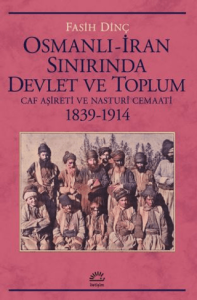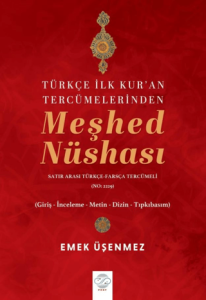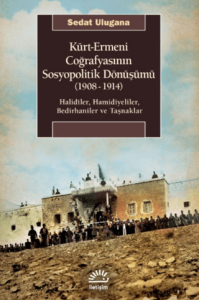
Çağlar boyunca ihtişamın ve zenginliğin sembolü olarak görülen mücevherlerin tarihin ve somut insan emeğinin bir ürünü olduğunu düşünmek kolay değil. Oysa tozun, toprağın içinden çıkarak usta ellerde mücevhere dönüşen değerli cevherler, bir saraya ya da malikâneye ulaşana dek pek çok insanın elinden geçer.
Arsen Yarman’ın “Osmanlı Döneminde Mücevher ve Ermeni Kuyumcular” kitabı, hem kapsadığı uzun zaman süreci (14.-20. yüzyıl) hem de kullandığı arşiv ve kaynakların zenginliği sayesinde tozun toprağın içinden çıkan elmas ve altın gibi değerli cevherlerin sarraf ve kuyumcuların elinden geçerek Osmanlı sarayına, zenginlerin köşklerine kadar takip ettiği uzun yolu aydınlatıyor.
Osmanlı mücevhercilik-kuyumculuğunu tarihi bir bütünlükte ele alan kitap, Osmanlı arşiv belgeleriyle görsel malzemeleri bu çerçeve içinde bütünleştiriyor. Bu sayede Osmanlı’nın kendine özgü mücevhercilik-kuyumculuk üslubunun şekillenmesinde Ermenilerin oynadıkları önemli rolü arşiv belgeleri aracılığıyla takip edebilmeyi mümkün kılan çalışma, kuyumculuk zanaatının icra edilme koşullarını ayrıntılarıyla ele alıyor.
Kitabını meşakkatli bir süreç sonunda hazırladığını vurgulayan Yarman, şunları söylüyor: “Bu kitapla cevherin nereden geldiği, nerede işlendiği, mücevherin kimin tarafından ve nerede tasarlandığı, kimlerin bu tasarımları uyguladığı, ortaya çıkan mücevheri sarayda ve saray dışında kimlerin taktığı gibi konuları incelemeye çalıştık.”
“Osmanlı Döneminde Mücevher ve Ermeni Kuyumcular” kitabı, 2.500 fotoğraf, belge vb. görsel malzemeyi (mücevher fotoğrafları, mücevher çizimleri, kuyumcu mühür ve imzaları) içeriyor. Sonunda Türkçe ve Ermenice birkaç farklı kaynaktan derlenen kuyumcu listelerine de yer verilen kitap, aynı zamanda bir kaynak niteliğinde.
…
Jewelry and Armenian Jewelers during the Ottoman Period
Jewels considered for ages as the symbols of splendor and wealth cannot be easily conceived as the product of history and of concrete human effort. Yet those valuable gems which after being extracted from dust and dirt turn into jewels in skilled hands make a long journey before landing in a palace or in a mansion.
Jewelry and Armenian Jewelers during the Ottoman Period prepared by Arsen Yarman and published by Yapı Kredi Yayınları enlightens, thanks to the long period (14th-20th centuries) it covers and the richness of the archives and sources it uses the path precious matters like diamonds and gold found in dust and dirt cross after being handled by bankers and jewelers before ending up in the mansions of the wealthy.
The book which discusses jewelry and jewel-making in a historical context, integrates Ottoman archival documents with visual material within the same framework. The study thus enables the reader to follow, through archival records, the important role Armenians played in the formation of a jewelery-making style proper to the Ottomans and deals with the implementation of the art of jewelery-making in its details.
Yarman who emphasizes the arduous course for the preparation of his book, explains: “In this book, we tried to study such matters as where the gems came from, where they were processed, where and by whom they were designed, who implemented these designs, who in the palace and beyond wore these jewels thus created.”
Jewelry and Armenian Jewelers during the Ottoman Period” contains 2,500 photographs, documents and visual material (pictures and drawings of jewels, stamps and signatures of jewelers). The book which also encompasses lists of jewelers compiled from a number of different records both in Turkish and Armenian is a valuable source of reference.
Çağlar boyunca ihtişamın ve zenginliğin sembolü olarak görülen mücevherlerin tarihin ve somut insan emeğinin bir ürünü olduğunu düşünmek kolay değil. Oysa tozun, toprağın içinden çıkarak usta ellerde mücevhere dönüşen değerli cevherler, bir saraya ya da malikâneye ulaşana dek pek çok insanın elinden geçer.
Arsen Yarman’ın “Osmanlı Döneminde Mücevher ve Ermeni Kuyumcular” kitabı, hem kapsadığı uzun zaman süreci (14.-20. yüzyıl) hem de kullandığı arşiv ve kaynakların zenginliği sayesinde tozun toprağın içinden çıkan elmas ve altın gibi değerli cevherlerin sarraf ve kuyumcuların elinden geçerek Osmanlı sarayına, zenginlerin köşklerine kadar takip ettiği uzun yolu aydınlatıyor.
Osmanlı mücevhercilik-kuyumculuğunu tarihi bir bütünlükte ele alan kitap, Osmanlı arşiv belgeleriyle görsel malzemeleri bu çerçeve içinde bütünleştiriyor. Bu sayede Osmanlı’nın kendine özgü mücevhercilik-kuyumculuk üslubunun şekillenmesinde Ermenilerin oynadıkları önemli rolü arşiv belgeleri aracılığıyla takip edebilmeyi mümkün kılan çalışma, kuyumculuk zanaatının icra edilme koşullarını ayrıntılarıyla ele alıyor.
Kitabını meşakkatli bir süreç sonunda hazırladığını vurgulayan Yarman, şunları söylüyor: “Bu kitapla cevherin nereden geldiği, nerede işlendiği, mücevherin kimin tarafından ve nerede tasarlandığı, kimlerin bu tasarımları uyguladığı, ortaya çıkan mücevheri sarayda ve saray dışında kimlerin taktığı gibi konuları incelemeye çalıştık.”
“Osmanlı Döneminde Mücevher ve Ermeni Kuyumcular” kitabı, 2.500 fotoğraf, belge vb. görsel malzemeyi (mücevher fotoğrafları, mücevher çizimleri, kuyumcu mühür ve imzaları) içeriyor. Sonunda Türkçe ve Ermenice birkaç farklı kaynaktan derlenen kuyumcu listelerine de yer verilen kitap, aynı zamanda bir kaynak niteliğinde.
…
Jewelry and Armenian Jewelers during the Ottoman Period
Jewels considered for ages as the symbols of splendor and wealth cannot be easily conceived as the product of history and of concrete human effort. Yet those valuable gems which after being extracted from dust and dirt turn into jewels in skilled hands make a long journey before landing in a palace or in a mansion.
Jewelry and Armenian Jewelers during the Ottoman Period prepared by Arsen Yarman and published by Yapı Kredi Yayınları enlightens, thanks to the long period (14th-20th centuries) it covers and the richness of the archives and sources it uses the path precious matters like diamonds and gold found in dust and dirt cross after being handled by bankers and jewelers before ending up in the mansions of the wealthy.
The book which discusses jewelry and jewel-making in a historical context, integrates Ottoman archival documents with visual material within the same framework. The study thus enables the reader to follow, through archival records, the important role Armenians played in the formation of a jewelery-making style proper to the Ottomans and deals with the implementation of the art of jewelery-making in its details.
Yarman who emphasizes the arduous course for the preparation of his book, explains: “In this book, we tried to study such matters as where the gems came from, where they were processed, where and by whom they were designed, who implemented these designs, who in the palace and beyond wore these jewels thus created.”
Jewelry and Armenian Jewelers during the Ottoman Period” contains 2,500 photographs, documents and visual material (pictures and drawings of jewels, stamps and signatures of jewelers). The book which also encompasses lists of jewelers compiled from a number of different records both in Turkish and Armenian is a valuable source of reference.

























